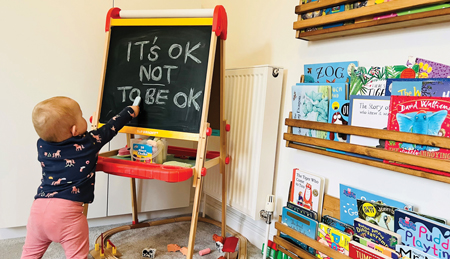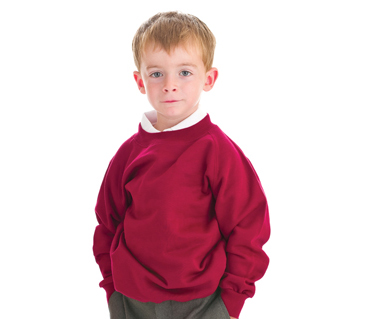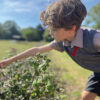The topic of endangered animals can be a difficult one for adults, let alone children. How do you explain, in simple and sensitive terms, that human action is destroying the planet and subsequently wiping out entire species of animals?
It’s the younger generations that are going to suffer the most from the impact of climate change, so it’s in their best interest to learn the hows and whys as early as possible. Knowledge is power, after all.
Here, My Oceans has put together their top tips for teaching children about endangered animals.
Use sensitive and simple language
There’s a fine line between being realistic and just plain terrifying. Children must understand the severity of the situation, but you should try to avoid harsh words and confusing terms that they’ll likely not understand.
Don’t: “Human ignorance is killing innocent animals; when the population of a species has declined at least 70% for reasons unknown, the International Union for Conservation of Nature (IUCN) declares it as endangered.”
Do: “Endangered animals are animals that have become so rare that they’re at risk of disappearing forever! This is why everyone must come together to take necessary the steps to protect them before it’s too late.”
Get the whole family involved
Make this a family activity by getting the whole crew together! If your children have older siblings who perhaps already know about endangered species, it still might be a good idea to get them involved.
Most little ones subconsciously mimic their older siblings, so they’re far more likely to take an interest in the topic if their brothers and sisters do too. Plus, helping save the world is a fantastic family bonding activity.
Find children-friendly books
If you’re not the best at wording things, or if your children need a little more clarification, look for children-friendly books that address the topic.
Fortunately, there are hundreds out there which are ideal for children aged three to 11.
You can find books that explore specific at-risk animals, such as ‘A Polar Bear in the Snow’ or ‘Give Bees a Chance’. This might be good if your child has a favourite animal that they want to learn more about.
There are also books that explain the subject of endangered animals in a general sense. Recommended reads might include works such as ‘My First Pop-Up Endangered Animal’s by Owen Davey and ‘A Wild Child’s Guide to Endangered Animals’ by author Millie Marotta.
Books are a fantastic way to enrich a child’s learning, especially for topics that might be a little upsetting or confusing. Set aside some time to go through each book together.
Let them ask as many questions as they need to
Children are incredibly curious – sometimes too much so. However, it’s important you let them ask as many follow-up questions as they need to.
If you want them to get their head around a totally bewildering subject, you should expect and prepare for an interrogation.
Some questions might be outrageous (hey, children are children) but do your best to give clear, honest answers to help them further grasp the topic.
Think of ways to help
Now that your little ones have a better understanding of what endangered animals are, you must plan all the ways that you can try to help the cause together.
As an adult, you’ll probably know the obvious solutions (more on those below), but this brainstorming session should be about encouraging your children to the discussion.
Nudge them in the right direction but let them feel like they’re the ones contributing awesome, life-saving ideas. This will make the children feel much more motivated to carry out the ideas in the next stage.
Support
This is perhaps the most important part of teaching your children about endangered animals: putting those plans into action.
Once you have your list of solutions, research each one until you have a good idea of your ‘who, what, when, where and why.’
Types of activities you could consider include:
Adopt an animal
Expose your children to endangered animals in a fun way that promotes responsibility. Your small monthly donation can help fund crucial work, plus, in exchange, you’ll typically receive a cuddly toy, regular updates, and a certificate.
Make eco-friendly lifestyle changes
Many adults have adopted bad environmental lifestyle habits, and bad habits are hard to shake. From early on, before these negative routines cement themselves in your children’s life, teach them:
• How to recycle, and why it’s crucial we do so
• The importance of eco-friendly products (such as plastic-free toilet paper and reusable shopping bags)
• How to reduce energy usage
• To avoid single-use plastic
• To eat less meat.
Raise funds together
There are plenty of UK charities for protecting endangered animals and their habitats, such as People’s Trust for Endangered Species (PTES) and WWF.
A possible ocean-specific charity you could support is the Marine Conservation Society, an organisation working to achieve a cleaner, healthier environment. Think of exciting ways to raise money for these charities, such as bakes sale or walking fundraiser.
Visit an animal shelter or wildlife centre – a super educational way to support a fantastic cause while helping your children to comprehend the topic in greater detail. Find your local animal shelter or wildlife centre and volunteer your time feeding the animals, cleaning and tidying habitats, or just being a companion.
Incorporate fun activities – children love to play! Playing is crucial for their development as it benefits a variety of skills, including cognitive and social. As you embark on this journey of better understanding endangered animals, look for fun activities that’ll help and engage them:
• Arts and crafts
• Roleplay
• Puppeteering
• Painting and drawing
• Singing and dancing.
They have the power to change the world
As a parent, it’s your responsibility to ensure you’re raising your children with the right beliefs, attitudes and knowledge. Theirs is the generation that will be hurt the most by the impacts of climate change, so it’s only right we give them the necessary tools to fight back – as early as possible.
Support them in grasping the severity of the situation in a way that motivates them to help the cause. No one is expecting a six year old to single-handedly change the world, but soon that six year old will be a fully-fledged adult that has a much better chance of doing so.
For further information please visit www.myoceans.co.uk





 Mining for diamonds
Mining for diamonds















